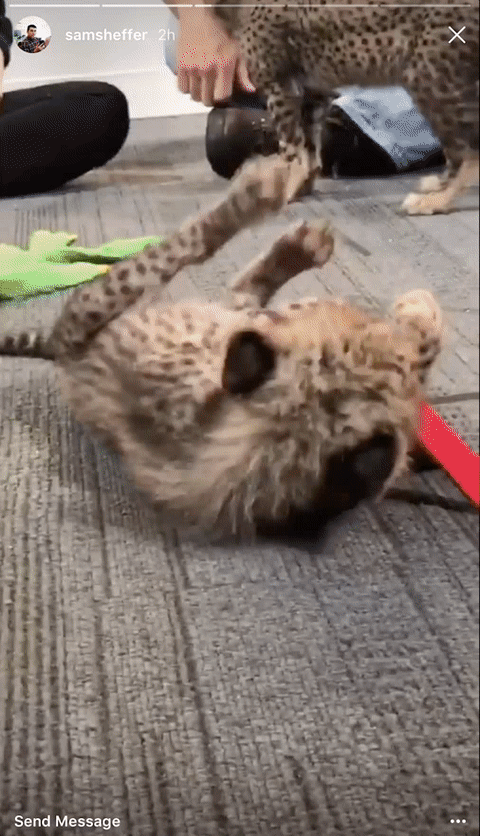
Another month, another set of new feature launches: this time the longform blogging platform Medium announcing ‘Series‘, a “new type of story”, then days later Facebook announcing its ‘Messenger Day‘ feature.
Last month it was Instagram‘s Carousel feature and WhatsApp‘s Status feature.
What all have in common is the almost unquestioned use of a horizontal storytelling mode: a move from scroll-based navigation to navigating through a swipe or a tap.
What does that mean for journalism and storytelling? I think it’s about time we asked.
From scroll to swipe
“Series are mobile stories that can be added to over time and unfold card by card with the tap of your finger”
There is a long shadow hanging over all these launches, of course, and the name of that shadow is Snapchat‘s Stories feature.
Since Snapchat adopted, and then popularised, the ‘tap to advance’ mode in 2013, every new horizontal feature launch has been heralded as a copy of that, from Twitter’s Moments feature in October 2015, to Instagram Stories in August 2016.
And yet Snapchat wasn’t the first platform to use the approach — more on this in a moment.
Meanwhile, the same mode has been slowly infiltrating the news industry too.
In 2015 NowThis launched Tap For News, an app that invited users to, well, do just that. And an increasing number of mobile news apps (try The Telegraph or Guardian apps for example) now allow you to swipe from one story to the next.
The BBC go vertical
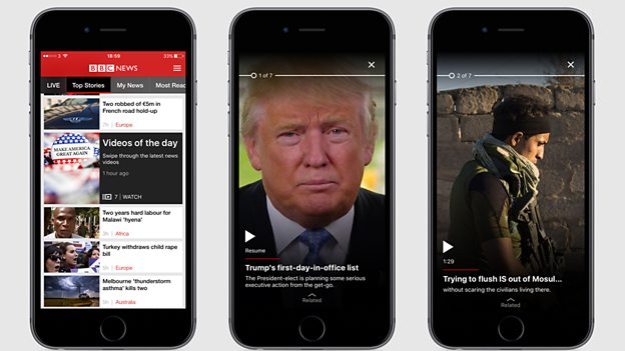
Image: BBC
In November last year (2016) the format got its big break in one of the most mainstream apps in news, when the BBC introduced horizontal navigation into its mobile news app with the launch of a daily vertical video roundup.
What is notable about the launch is that James Metcalfe‘s post about the feature focuses on the vertical orientation of the video, its length, and the use of captions — and yet he doesn’t dwell at all on the editorial decision to allow users “to swipe through”.
That, for me, is interesting. The format is being taken for granted — but it shouldn’t be.
Why is this important? Sequence.
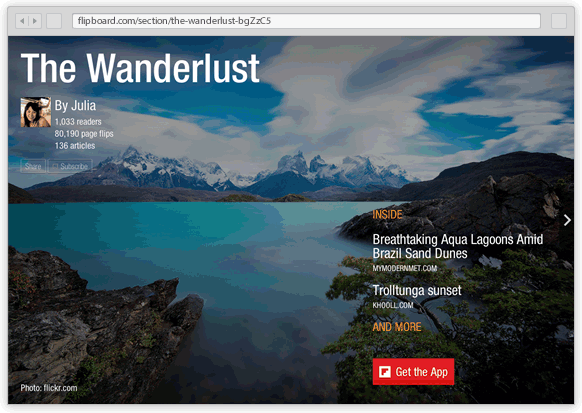
Image from TechCrunch
I said that Snapchat wasn’t the first platform to use the approach. For the most high profile example of the approach pre-Snapchat, I’d probably look to Flipboard (and yes, there were others before that).
But it’s the difference between the two which is important: the point at which navigation is imposed.
Flipboard’s innovation was to popularise the idea of imposing horizontal navigation on digital content pulled from RSS feeds, at the point of publication. A blog post or article which you would scroll through in a web browser, became one which you could tap through, in a mobile app.
But Snapchat popularised the concept of imposing horizontal navigation at the point of creation.
Put another way: Snapchat forced users to think about sequence, in a way that they didn’t have to do before.
This became particularly clear to me when I was writing my ebook Snapchat For Journalists. A journalist seeking to tell a story well using the tool had to think about the order in which they took and combined images.
Tension and the element of surprise
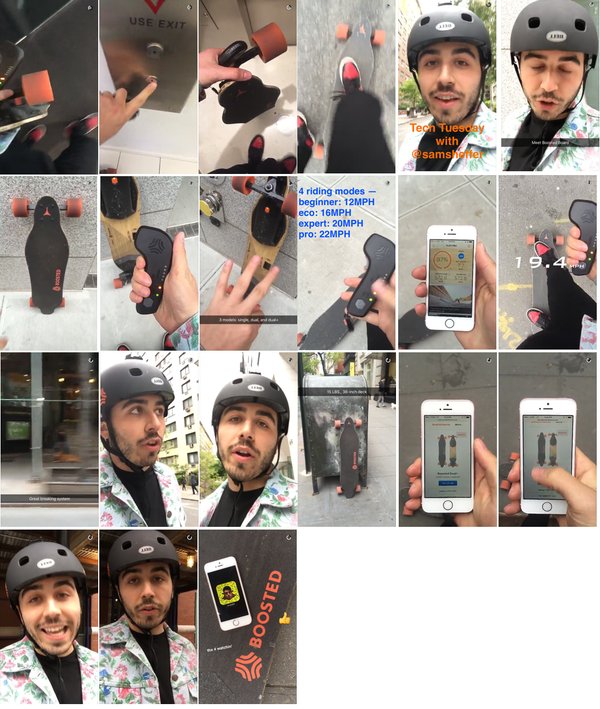
Mashable’s Sam Sheffer uses sequences particularly well in his Snapchat stories
Considering sequence has some knock-on effects too. Ordering elements means we also have to think about variety.
In traditional television terms that means aiming to include a variety of shots (close up, wide shot, and so on), but on a platform like Twitter or Instagram that also means variety of media: still image, video, gif, text.
You can call this the element of surprise: repeat the same type of content too often, and the story becomes predictable; there is less narrative tension.
More variety, in contrast, keeps the user engaged.
This is most obvious when playing with Medium’s new Series feature: if you treat it like Flipboard and just arbitrarily split your article at the end of every page/screen you are not playing to its strengths.
Instead the best work in the new format seeks to introduce the element of surprise by alternating between text passages of different lengths, changing the colour of the background, breaking up stories with images, and other media.
Then there is what Todd Brison calls resumability — the way that tools like Series remember your position when you resume reading, something that we take for granted in print but which has until recently not been the default online.
Editing beyond the word
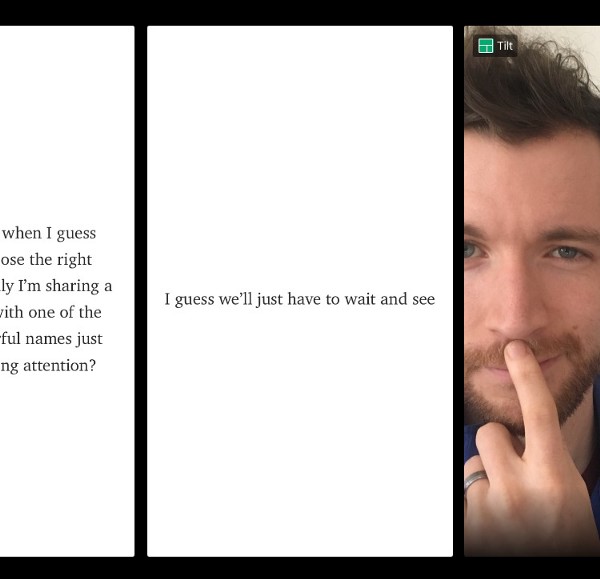
Medium’s Series forces users to consider the sequence of elements. Via Todd Brison
So the shift from a vertical, scrolling mode of navigation to an inreasingly horizontal, tapping/swiping mode of navigation adds a new consideration.
Those of us who are text-oriented will increasingly need to think not just in terms of how we edit our words, but in how we employ ‘cuts’ between parts of our story, from ‘wide shot’ to ‘close up’, and so on (literally or figuratively).
Equally, we will need to think in episodic terms too. Medium’s choice of the word Series for its new feature is telling: the feature is designed to facilitate a publishing approach which rolls out information part-by-part and not necessarily all-at-once (just as Snapchat Stories are designed for users to check in to catch up on the latest episodes as they are published throughout the day).
Those episodes might be within a story (the equivalent of chapters, or updates in a liveblog), or between stories (within a publication or roundup, for example).
Once again, we are seeing decisions that used to be made by publishers and producers, now having to be made by journalists. Schedule your own programme, choose the running order. Tap to advance.
If you have the Medium app on your phone you can read a version of this article optimised for sequences using the Series format here.

Two more interesting examples of how tap is replacing scroll in storytelling: Amazon Rapids (aimed at kids) and Hooked (aimed at teens).
Pingback: Using Instagram to cover an election: lessons from #wmmayor | Online Journalism Blog
Pingback: What changed in 2017 — and what we can expect in 2018 (maybe) | Online Journalism Blog
Pingback: L’avenir du journalisme – revue de presse du 22 décembre 2017 - Cladelcroix
Pingback: Journalism, Media, and Technology Trends and Predictions 2018 – Technology News BD
Pingback: Vince Dixon Portfolio